Chihuahua weight by month

Chihuahua dogs are popular due to their small size and weight, they are considered companion dogs, which is not surprising - you can take them everywhere with you. Consider the characteristics of the breed, as well as the weight of puppies and adult dogs.

Breed history and characteristics
Compared to other miniature dogs, Chihuahuas were born naturally rather than through selection. The roots of this breed stretch back to the times of the ancient Mayans and Aztecs, where dogs were considered sacred, and only the nobility had the right to keep them. On the territory of modern Mexico, archaeological scientists constantly stumble upon ancient images of this breed and find the bones of miniature dogs. In those days they were called techichi.
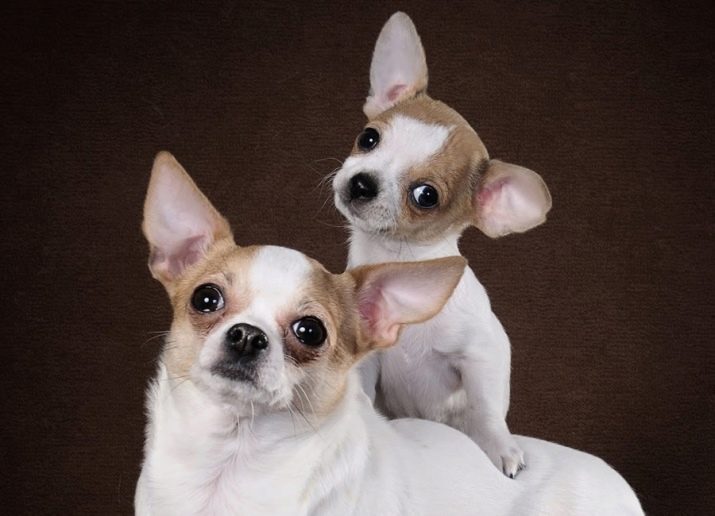
After the destruction of ancient civilizations, poor dogs were considered a delicacy and hunted. The animals were forced to leave for the woods. And only a few centuries later, European sailors began to import this breed to Europe, after which breeders appeared with the further sale of puppies.
Due to its natural appearance the Chihuahua breed does not have genetic pathologies and other abnormalities, is resistant and has good immunity. All thanks to natural selection and wild wandering life.
Despite the difficulty to imagine this situation, Chihuahuas are tamed wild dogs.

Mini Chihuahuas at birth most often weigh about 80 grams, and standard type puppies weigh between 80 and 120 grams. Heavy-weight puppies belong to the medium to large types of this breed. It may depend on the number of puppies in the litter. If the female has delivered between one and three puppies, then sneezes are likely to be medium to large. The larger the litter, the less each puppy weighs.
The growth and weight stop in puppies occurs at 8 months, and reliable predictions can be made when the brood is 3 months old. By this time, the puppies are gaining most of their weight. Chihuahua puppies have excess body fat, which helps to avoid many diseases.
Excessive weight in puppies is not a cause for concern, as over time, when they become stronger, the necessary harmony and the correct size ratio will appear.
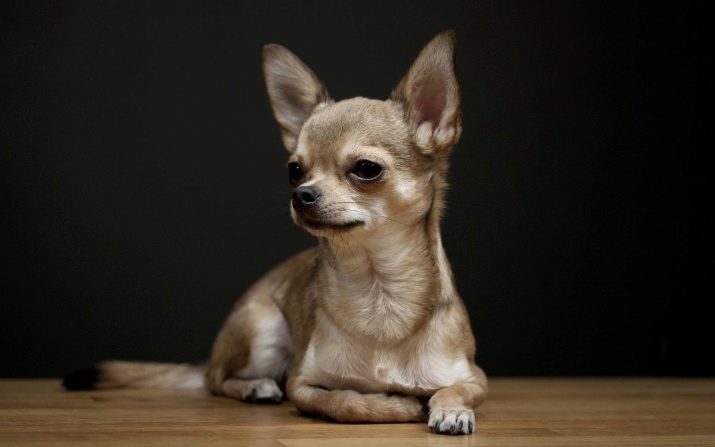
What determines the size and weight of a Chihuahua?
By purchasing a Chihuahua puppy, it is apparently impossible to understand what kind of adult he will become. There are too many factors on which the final result of the size and weight of dogs of this breed depends. Let's list the main ones and briefly describe the degree of influence on the size of an individual. The standards do not apply to the growth of adults, but the general indicators range from 18 to 25 centimeters. The weight of pets is controlled more strictly, for participation in exhibitions the maximum weight indicator is 3 kilograms, all dogs over this indicator are not allowed to participate.
There are general standard indicators that help owners determine the normal development of their puppies, but do not forget that each dog has its own individual characteristics, including the totality of genetics (up to five generations), food, habitat. Mini Chihuahuas can give birth to mini and standard puppies, like a standard female.
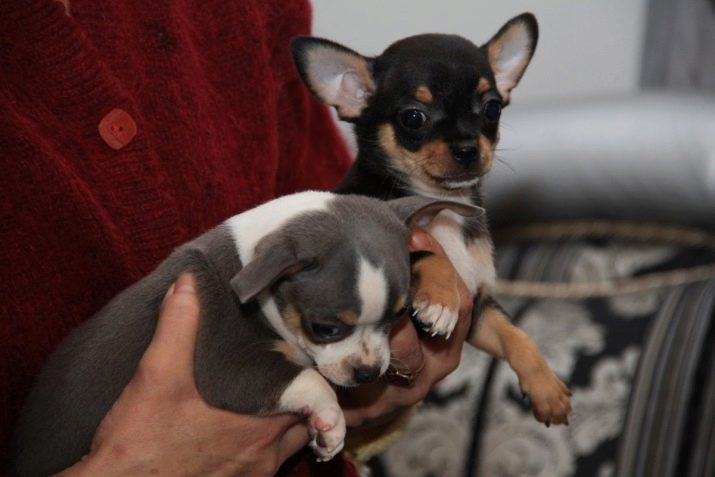
- Puppy weight at birth... This indicator is one of the main ones by which you can tentatively determine the weight of a puppy in adulthood. Below is a table by which you can present the approximate dimensions of your pet, if you know with what weight he was born (by type and weight).
| Puppy weight at birth | Puppy weight at birth | Puppy weight at birth | Puppy weight at birth |
| 70 - 80 grams | 90 - 120 grams | 125 - 130 grams | 145 - 170 grams |
| Type: dwarf | Type: small | Type: medium | Type: large |
| Adult dog weight: 1 - 1.4 kg | Adult dog weight: 1.7 - 1.9 kg | Adult dog weight: 2.1 - 2.3 kg | Adult dog weight: 2.5 - 3.0 kg |
There is an approximate table indicating the norms of weight by week:
- 1st week - from 100 to 270 grams;
- 3rd week - from 170 to 500 grams;
- 6th week - from 255 to 765 grams;
- 8th week - from 310 to 950 grams;
- 10th week - from 370 grams to 1.07 kilograms;
- 15th week - from 540 grams to 1.5 kilograms;
- 24th week - from 740 grams to 2.2 kilograms;
- 1 year and 6 months - from 908 grams to 3 kilograms.
It should be understood that the weight table has relative indicators, so you should not limit puppies from a balanced diet, trying to achieve a minimum weight. Perhaps a sneeze puppy is large to avoid disease. It is worthwhile to properly monitor the health of the puppies, they need normal nutrition for healthy growth.

- Weight by month... If there is no data on birth weight, but the date of birth of the puppy is known, then the following table will help, which determines the estimated type of size and weight of an adult animal, depending on its development (weight) by months after birth.
| Age | Type: dwarf | Type: small | Type: medium | Type: large |
| 1 month | 200 - 230 grams | 270 - 370 grams | 455 - 485 grams | 540 - 650 grams |
| 2 months | 315 - 455 grams | 550 - 610 grams | 680 - 764 grams | 825 - 1050 grams |
| 3 months | 425 - 540 grams | 625 - 855 grams | 940 - 1050 grams | 1.17 - 1.4 kg |
| 4 months | 570 - 710 grams | 855 - 1110 grams | 1.25 - 1.39 kg | 1.54 - 1.82 kg |
| 5 months | 680 - 855 grams | 995 - 1116 grams | 1.48 - 1.65 kg | 1.82 - 2.15 kg |
| 6 months | 745 - 945 grams | 1.11 - 1.45 kg | 1.65 - 1.85 kg | 2.02 - 2.41 kg |
| Adult dog (1.5 years old) | 1.0 - 1.2 kg | 1.4 - 1.9 kg | 2.1 - 2.3 kg | 2.5 - 3.0 kg |
Referring to the data in the table, one should, of course, take into account that its indicators are standard requirements for the breed, but they cannot predict 100% how a dog will look at 18 months of age, when its growth and formation of the whole organism ends - from character before physical development. True, the breeders are sure that the growth of puppies of this breed stops already at 8 or 9 months, and after that it builds muscle mass for several months in order to have its final adult appearance by the year after birth.
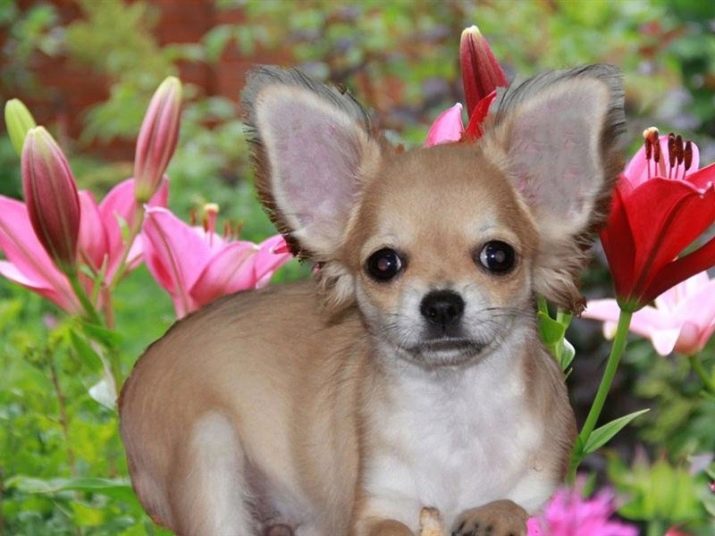
- Growth of a normally developed dog into adulthood ranges from 18 to 25 centimeters, and the best weight is considered to be 1.5-2 kg, although the breed standards allow for a weight of up to 3 kg. A weight over 3 kg indicates an obese dog.

- Pedigree indicators... An important factor that significantly determines the development of puppies from birth. This indicator can affect the offspring even after 5 generations. Therefore, when choosing a puppy to participate in various exhibitions, you should carefully study his pedigree.

- Number of puppies in a litter, among which your pupil was born. Here everything is inversely proportional - the larger the litter, the less the weight of each puppy, and vice versa. But with good care and proper feeding, puppies will begin to develop fully in accordance with the characteristics inherent in their genes. It is more reliable to judge how puppies will grow up at the age of 3 months. Until that time, even the sickest puppies from a large litter should achieve good performance if they have excellent health and excellent pedigree.

- Care and feeding... The conditions of keeping and feeding significantly affect the health of puppies, determining their condition and development. Given the miniature size of Chihuahua dogs, it is necessary to create special - one might say, gentle - conditions for these babies. And organize feeding according to all the necessary norms, while carefully monitoring their development: control weight gain - every week in the first month of life, monthly - in other periods of their growth up to 18 months of life. According to experts, from 3 to 12 months of age, the weight gain of normally developing puppies should, on average, be at least 80-100 grams per month. After a year of life, the weight gain drops sharply.

What if the puppy's development lags behind?
If there are deviations in the height and weight of the puppy from the breed standards, then in cases where the weight exceeds the norm, nothing should be done before its 12 months of age. Even with a significant excess of weight, this is not scary, most likely, everything will return to normal when the puppy is fully formed like an adult dog. In Chihuahuas, this phenomenon is not uncommon.
If, on the contrary, the puppy lags behind in weight from the lowest thresholds of its type, then the situation should be assessed and the cause of the deviations should be found with the help of a veterinarian. Common reasons for this are as follows:
- gastrointestinal diseases;
- intolerance to any food components;
- oppression of the pet by other puppies or animals;
- congenital diseases;
- lack of attention from the owner and other family members;
- the presence of worms and insects.
Having identified the cause, you should eliminate it, if this is possible, or reconcile and surround your pet even more with your attention and care.

General characteristics of the breed
A striking distinctive feature of the breed is its large head, shaped like an apple. When buying this breed, you should pay attention to the strength of the back and neck, which is an indicator of a healthy and good pedigree.
The dogs have three color options. Solid color is common, but there is also double color and spots.Sometimes you can find puppies of merle color, which is an indicator of some kind of marriage. This color appeared during selection attempts. Puppies with this color are more likely to have pathologies and abnormalities.
The eyes of these decorative dogs are often dark, but there are exceptions, which is also considered natural. Depending on the color, the color of the nose changes - a lighter color means a lighter shade of the nose and vice versa.
Chihuahuas are short-haired and long-haired. However, both the first and the second are considered indicators of the breed.
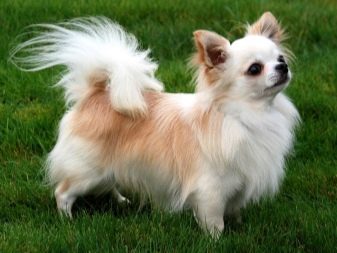

Within the breed itself, there are two divisions.
- Cobby type - more stocky dogs with a snub-nosed muzzle.
- Deer type - dogs on thin long legs are more miniature; they are often confused with toy terriers.
It is impossible to unambiguously determine how much an adult chihuahua should weigh without taking into account the pedigree and individual characteristics. There are certain desirable standards, when calculating which it is impossible to sweep aside the individual indicators of dogs. Figures for adults range from 1.5 to 3 kilograms, and overweight dogs are more likely to be overweight.


In terms of size, two types of sneezes are distinguished:
- mini;
- standard.
An interesting fact: small males and large females are used for breeding Chihuahuas.

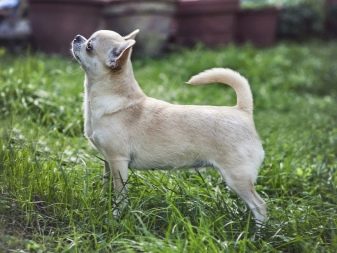
For the peculiarities of caring for this breed, see below.






































